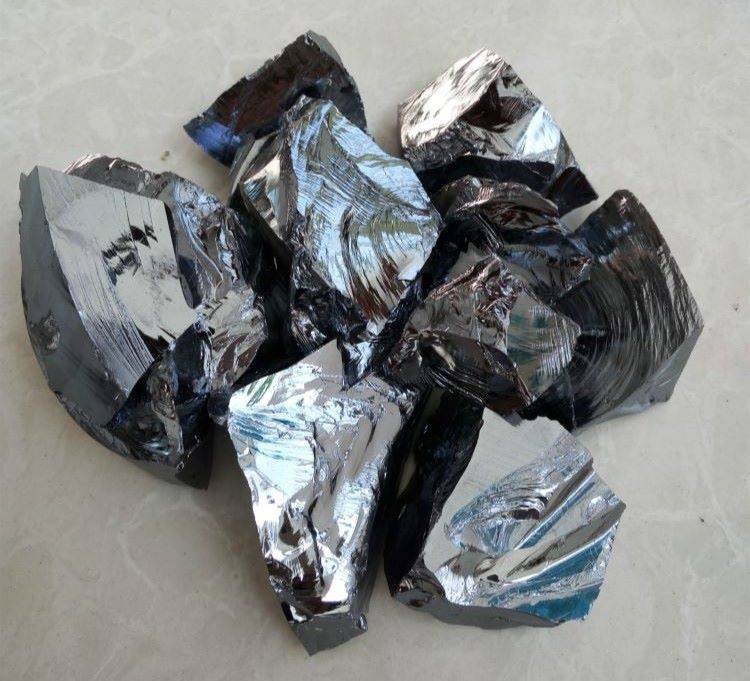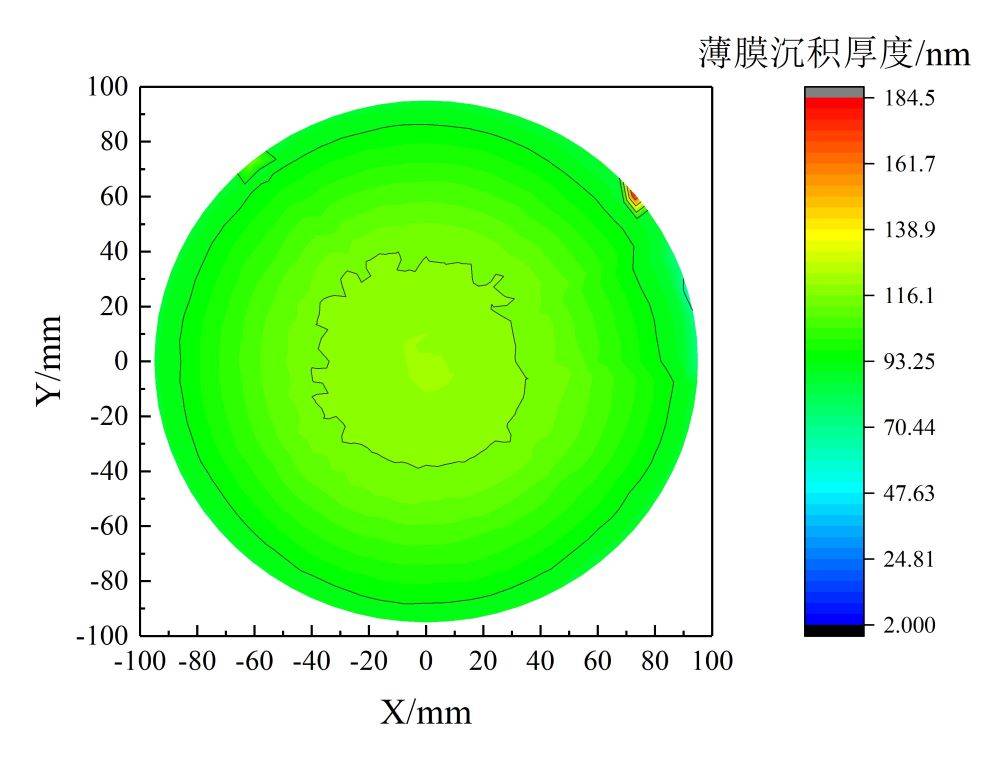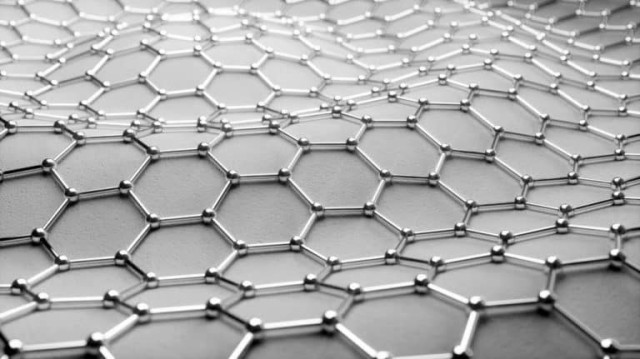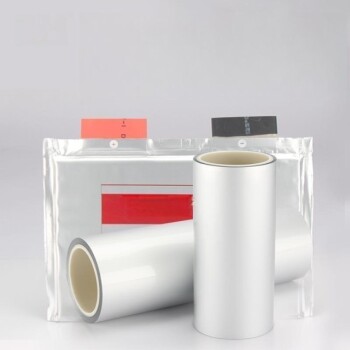Principles of Thin Film System Design
Film Properties
Thin films exhibit a range of physical and chemical properties that are intricately tied to their thickness, composition, and the method of deposition. These properties are multifaceted, encompassing optical, electrical, and mechanical characteristics, each of which can be meticulously tailored to meet specific application requirements.
Optical Properties
Optical properties are particularly crucial in applications such as solar cells and optical coatings. For instance, the refractive index and transmittance of a thin film can be engineered to optimize light absorption or reflection, thereby enhancing the efficiency of solar cells or the performance of anti-reflective coatings. The table below illustrates some common optical properties and their significance in different applications:
| Optical Property | Significance in Applications |
|---|---|
| Refractive Index | Controls light bending and can enhance light trapping in solar cells. |
| Transmittance | Determines the amount of light that passes through, crucial for transparent conductive films. |
| Reflectance | Influences the amount of light reflected, important for anti-reflective coatings. |
Electrical Properties
Electrical properties, such as conductivity and resistivity, are vital in electronic devices where thin films serve as conductive pathways or resistive elements. The ability to precisely control these properties allows for the design of high-performance circuits and sensors. For example, in flexible electronics, the mechanical flexibility combined with low resistivity is essential for reliable performance.
Mechanical Properties
Mechanical properties, including hardness, elasticity, and adhesion, play a significant role in the durability and functionality of thin films. These properties are particularly important in applications where the film must withstand mechanical stresses, such as in protective coatings or wear-resistant layers. The following list highlights some key mechanical properties and their relevance:
- Hardness: Determines the film's resistance to scratching and wear.
- Elasticity: Affects the film's ability to return to its original shape after deformation.
- Adhesion: Ensures strong bonding between the film and the substrate, preventing delamination.
By understanding and manipulating these properties, researchers and engineers can design thin films that excel in various applications, from energy conversion to protective coatings.

Film Deposition Technology
The quality and performance of thin films are profoundly influenced by the deposition method employed, such as Physical Vapor Deposition (PVD), Chemical Vapor Deposition (CVD), and Solution Method. Each technique offers distinct advantages tailored to specific materials and applications.
Physical Vapor Deposition (PVD)
PVD involves the evaporation or sputtering of material to form a thin film. This method is particularly advantageous for producing high-quality films with excellent adhesion and low contamination levels. It is widely used in the semiconductor industry for applications requiring precise control over film thickness and uniformity.
Chemical Vapor Deposition (CVD)
CVD, on the other hand, relies on chemical reactions to deposit material onto a substrate. This technique is versatile and can be adapted to various materials, making it suitable for applications ranging from solar cells to optical coatings. CVD allows for the creation of complex multi-layer structures with tailored properties.
Solution Method
The Solution Method involves the application of a liquid precursor that undergoes chemical reactions upon deposition. This technique is cost-effective and scalable, making it ideal for large-scale applications such as solar panels and flexible electronics. It offers the flexibility to deposit a wide range of materials with varying properties.
Each deposition method has its own set of process parameters, including temperature, pressure, and atmosphere, which must be meticulously controlled to achieve desired film properties. The choice of method is thus critical in ensuring the functionality and reliability of the thin film system.
| Deposition Method | Advantages | Suitable Applications |
|---|---|---|
| PVD | High quality, excellent adhesion, low contamination | Semiconductor industry, optical devices |
| CVD | Versatile, adaptable to various materials | Solar cells, optical coatings, multi-layer structures |
| Solution Method | Cost-effective, scalable | Solar panels, flexible electronics, large-scale applications |
In summary, the selection of the appropriate deposition technology is pivotal in determining the characteristics and performance of thin films, influencing their applicability across diverse industries.
Film Layer Design
The design of the film layer is a meticulous process that involves several critical considerations, each of which plays a pivotal role in determining the overall performance and functionality of the thin film system. Key factors include the layer thickness, the combination of materials, and the sequence of layers.
Layer Thickness
The thickness of each layer is a fundamental parameter that directly influences the film's optical, electrical, and mechanical properties. For instance, a layer that is too thin may fail to provide the necessary protection or functionality, while a layer that is too thick can lead to unnecessary material waste and potential performance issues. Therefore, precise control over layer thickness is essential for achieving optimal results.
Combination of Materials
Selecting the right materials for each layer is another crucial aspect of film layer design. Different materials have distinct physical and chemical properties that can be leveraged to achieve specific functionalities. For example, a combination of conductive and insulating materials can be used to create a functional gradient within the film, enhancing its overall performance. The compatibility and interaction between materials must also be carefully considered to avoid potential issues during the deposition process.
Sequence of Layers
The arrangement of layers, or the sequence in which they are deposited, is equally important. The order of layers can significantly impact the film's performance, as each layer interacts with the ones above and below it. For example, in optical coatings, the sequence of layers can affect the film's ability to reduce reflection and enhance transmittance. Therefore, the sequence of layers must be carefully planned to achieve the desired outcome.
In summary, the design of the film layer is a complex process that requires careful consideration of layer thickness, material selection, and layer sequence. Each of these factors directly affects the overall performance and functionality of the thin film system, making them essential parameters in the design process.
Examples of Thin Film System Design
Thin Film Design of Solar Cells
Solar cells harness the power of thin film technology to transform light energy into electricity. This intricate design encompasses several key layers, each playing a crucial role in optimizing energy conversion efficiency.
The primary layer is the light-absorbing layer, which captures the sun's rays and converts them into electrical energy. This layer is typically composed of materials like amorphous silicon, cadmium telluride, or copper indium gallium selenide, each chosen for their unique absorption spectra and conversion efficiencies.
Next, the transparent conductive films (TCFs) are essential for guiding the generated electrical current to the output terminals. These films, often made from indium tin oxide (ITO) or doped zinc oxide, must be highly transparent to maximize light absorption while maintaining excellent electrical conductivity.
Protective layers, such as anti-reflective coatings and barrier films, are also integral to the design. Anti-reflective coatings reduce light loss by minimizing reflection, thereby enhancing the overall efficiency of the solar cell. Barrier films, on the other hand, protect the sensitive inner layers from environmental factors like moisture and oxygen, which can degrade performance over time.
The interplay of these layers is meticulously engineered to ensure that each contributes optimally to the solar cell's performance. This multi-layered approach not only enhances energy conversion efficiency but also extends the operational lifespan of the solar cell, making thin film technology a cornerstone of modern photovoltaic systems.

Thin Film Design for Optical Coatings
Optical coatings, such as anti-reflective coatings, are meticulously designed to harness the principles of light interference and multi-layer structures, thereby enhancing transmittance and minimizing reflection. These coatings are integral to a myriad of applications, from consumer electronics to advanced scientific instruments. The foundational materials used in these coatings often include Silicon Dioxide (SiO2) and Magnesium Fluoride (MgF2), which are chosen for their distinct optical properties and compatibility with various deposition techniques.
The design of optical coatings goes beyond mere material selection; it involves a sophisticated interplay of layer thicknesses and refractive indices. For instance, Distributed Bragg Reflectors (DBRs) are a prime example where alternating layers of high and low refractive index materials are deposited to achieve high reflectivity. The oblique-angle deposition technique is frequently employed to create these layers, resulting in reflectivities that closely align with theoretical predictions, such as a single-material DBR with three periods achieving 72.7% reflectivity.
Moreover, optical coatings are not confined to static applications. They are pivotal in dynamic environments, such as flexible displays, where the coating must maintain its integrity and performance under varying mechanical stresses. This adaptability underscores the versatility and robustness of optical coatings in modern technology.
In essence, the design of thin film optical coatings is a nuanced blend of scientific precision and practical application, ensuring that each layer contributes optimally to the overall optical performance. This meticulous approach ensures that the coatings not only meet but exceed the functional requirements of their intended applications.
Thin Film System Design Considerations
Material Selection
The choice of materials is pivotal for the successful design of thin films, as it directly influences the film's performance and functionality. Several critical factors must be considered during material selection, including the physical and chemical properties of the materials, their compatibility with the substrate, and the potential interactions that may occur during the deposition process.
Physical and Chemical Properties
The physical and chemical properties of the materials are fundamental to the design process. These properties can include:
- Optical Properties: Transparency, reflectivity, and absorbance, which are crucial for applications like optical coatings and solar cells.
- Electrical Properties: Conductivity and resistivity, essential for electronic and photovoltaic applications.
- Mechanical Properties: Hardness, flexibility, and wear resistance, which are important for durability and reliability.
Compatibility with Substrates
Compatibility with the substrate is another key consideration. The substrate material can significantly affect the adhesion and stability of the thin film. Common substrate materials include:
- Silicon: Widely used in semiconductor applications.
- Glass: Popular for optical and display applications.
- Plastics: Used in flexible electronics and packaging.

Potential Interactions During Deposition
Potential interactions during deposition can lead to variations in film properties. Techniques such as Physical Vapor Deposition (PVD), Chemical Vapor Deposition (CVD), and Solution Method each have unique impacts on material interactions. For instance:
- PVD: Typically results in high-quality films with good adhesion but may require vacuum conditions.
- CVD: Allows for the deposition of complex compounds but can involve high temperatures and chemical reactions.
- Solution Method: Offers a cost-effective approach for large-scale production but may require post-treatment for optimal performance.
By carefully selecting materials and considering these factors, engineers can design thin films that meet specific performance requirements and application needs.
Preparation Process Optimization
The deposition process is a critical determinant of film quality, necessitating meticulous optimization to align with the desired film properties. This optimization involves a dual approach: selecting appropriate deposition techniques and fine-tuning key process parameters.
Deposition Techniques
Various deposition techniques are available, each suited to different materials and applications. Common methods include:
- Physical Vapor Deposition (PVD): Suitable for high-quality, dense films, often used in applications requiring excellent mechanical and electrical properties.
- Chemical Vapor Deposition (CVD): Ideal for complex, high-temperature films, offering precise control over film composition and thickness.
- Solution Method: Preferable for large-area coatings and flexible substrates, enabling the deposition of films with diverse functionalities.
Process Parameters
Fine-tuning process parameters is essential for achieving optimal film characteristics. Key parameters include:
| Parameter | Impact on Film Quality |
|---|---|
| Temperature | Influences film adhesion, density, and stress. Higher temperatures often result in denser, less stressed films but may also lead to substrate damage. |
| Pressure | Affects the mean free path of particles, influencing film density and uniformity. Lower pressures typically result in denser films, while higher pressures can enhance film adhesion. |
| Atmosphere | Determines the film's chemical environment, affecting its composition and properties. Controlled atmospheres (e.g., inert gases) are often used to prevent unwanted reactions. |
By carefully selecting the deposition technique and optimizing these parameters, it is possible to achieve films with the desired optical, electrical, and mechanical properties, ensuring their suitability for a wide range of applications.
Film Thickness and Uniformity
Maintaining precise control over film thickness is paramount for ensuring both the functional reliability and consistency of thin film systems. Uneven film layers can lead to a myriad of issues, including unstable performance and potential damage to the equipment. This is particularly critical in applications where homogeneity in the thickness of the deposited coating is essential.
For instance, in the fabrication of solar cells, even the slightest variation in film thickness can significantly impact the energy conversion efficiency. Similarly, in optical coatings, non-uniform film thickness can cause differences in the material’s optical properties, thereby affecting the end product’s performance.
To achieve optimal film thickness and uniformity, it is necessary to manage various factors such as the deposition rate, temperature, and other process parameters. For thin films, a moderate deposition rate is often sufficient, whereas for thicker films, a quicker deposition rate may be required. The goal is to strike a balance between the demands of speed and the need for accurate film thickness control.

| Factor | Impact on Film Thickness and Uniformity |
|---|---|
| Deposition Rate | Controls the speed at which the film is deposited, affecting thickness and uniformity. |
| Temperature | Influences the film's microstructure and adhesion, critical for maintaining uniform thickness. |
| Process Parameters | Includes factors like pressure and atmosphere, which must be optimized to ensure consistent film quality. |
Understanding the application’s specific requirements is crucial to avoid over or under-specifying uniformity. This involves a thorough knowledge of the desired film properties, such as index of refraction, and how they interact with the substrate and other layers within the system. Proper adhesion between the thin film and the substrate is also vital to prevent delamination, which can result in product failure. Factors such as the deposition technique, substrate preparation, and interfacial treatments all play a role in achieving this.
Post-Treatment Process
Post-treatment processes play a pivotal role in refining the performance and stability of thin films. Techniques such as annealing and scribing are commonly employed to enhance these properties. Annealing, for instance, involves heating the film to a specific temperature and then slowly cooling it, which can reduce internal stresses and improve the film's structural integrity. Scribing, on the other hand, is used to create precise patterns or break the film into smaller sections, often necessary for applications like solar cells.
These post-treatment processes can significantly alter the film's microstructure and properties. For example, annealing can lead to the recrystallization of grains, enhancing the film's mechanical strength and electrical conductivity. Similarly, scribing can improve the film's flexibility and adhesion to the substrate. However, these benefits come with the need for careful adjustments based on the specific requirements of the application.
| Process | Description | Impact on Film Properties |
|---|---|---|
| Annealing | Heating and slow cooling | Enhances structural integrity, reduces internal stresses, improves mechanical strength and electrical conductivity |
| Scribing | Creating precise patterns or breaking into sections | Improves flexibility and adhesion, necessary for applications like solar cells |
The choice of post-treatment process and the parameters involved, such as temperature and duration for annealing, or the precision of scribing, must be meticulously tailored to the film's intended use. This ensures that the film not only meets but exceeds the performance expectations set forth in the initial design phase.
Functional Testing and Evaluation
After the completion of the design phase, it is imperative to subject the thin film system to rigorous functional testing and evaluation. This critical step ensures that the system not only meets but exceeds the predefined performance expectations. The testing regimen encompasses a comprehensive array of assessments, each meticulously designed to probe different aspects of the film's functionality.
Key Tests in Functional Evaluation
-
Optical Testing: This involves measuring the film's optical properties, such as transmittance, reflectance, and absorbance. These metrics are crucial, especially in applications like optical coatings and solar cells, where precise light management is essential.
-
Electrical Testing: The electrical properties of the film, including conductivity and resistivity, are evaluated to ensure they align with the design specifications. This is particularly important in electronic applications where the film acts as a component in circuits.
-
Environmental Testing: To validate the film's durability and stability, it is exposed to various environmental conditions. These tests simulate real-world scenarios, such as temperature fluctuations, humidity, and chemical exposure, to assess the film's resilience.

Importance of Comprehensive Evaluation
The thoroughness of these tests is paramount. Any shortcomings detected during this phase can be addressed before the film system is deployed, thereby mitigating potential failures and enhancing overall reliability. Each test provides valuable data that contributes to the optimization of the film's performance, ensuring it functions optimally in its intended application.
Related Products
- Inclined Rotary Plasma Enhanced Chemical Vapor Deposition PECVD Equipment Tube Furnace Machine
- RF PECVD System Radio Frequency Plasma-Enhanced Chemical Vapor Deposition RF PECVD
- Float Soda-Lime Optical Glass for Laboratory Use
- 400-700nm Wavelength Anti Reflective AR Coating Glass
- High Temperature Resistant Optical Quartz Glass Sheet


















